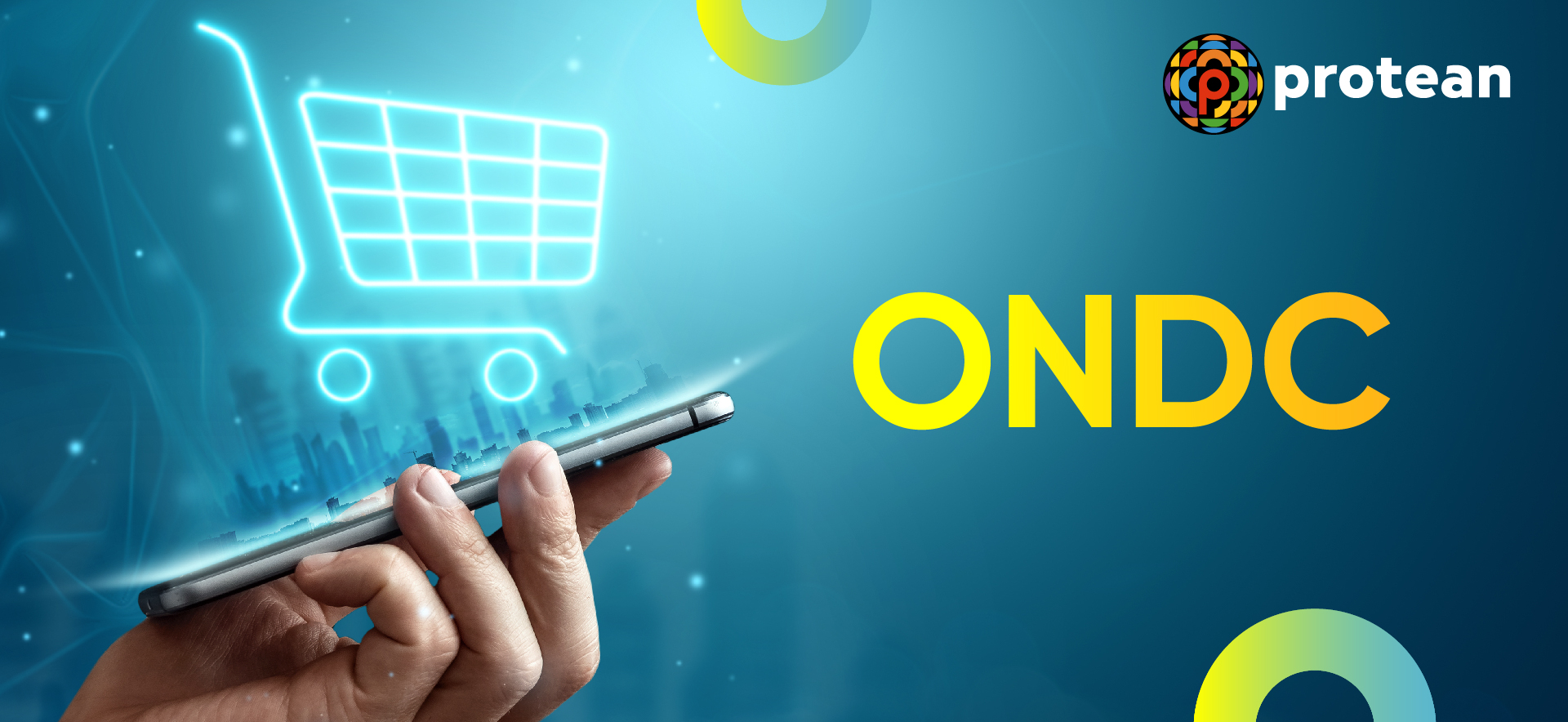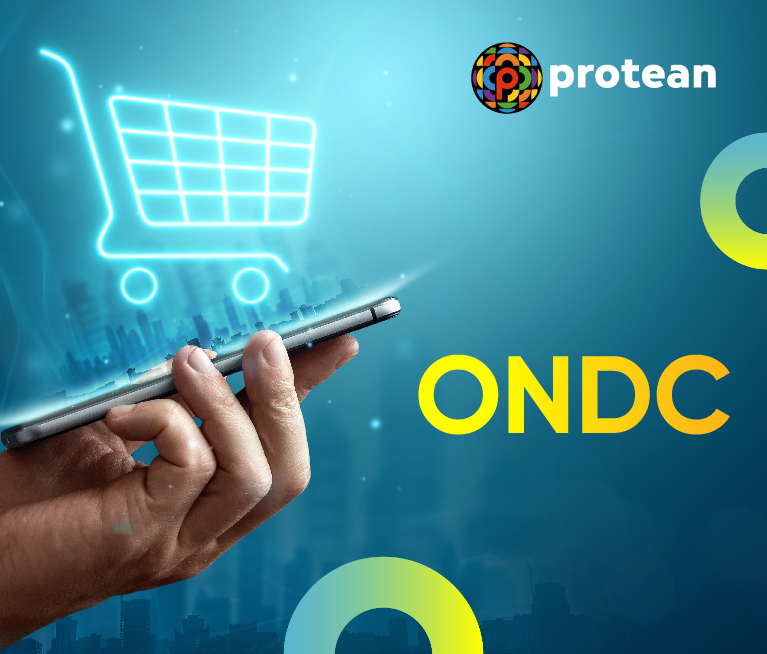The new scope of e-commerce expansion is rapidly felt by Indian businesses over the past few years. As people have been over-reliant on digital shopping since the beginning of the COVID-19 pandemic, e-commerce giants today can dictate the fate of most online businesses.
To disrupt the monopoly, the Indian Government proposed its Open Network for Digital Commerce or ONDC. It will standardise the supply value chain across India by integrating almost every supplier across the grocery, mobility, service, consumer goods and other sectors under one roof.
Since its inception in 2022, this open-source network has been providing equal opportunities to all its participants. ONDC's primary goal is to bring 80% of India’s offline kirana stores into the online space.
What Were the Reasons Behind the Government Launching ONDC?
Many factors influenced the Indian Government to formulate new methods of rejuvenating the country's e-commerce sector. Their actions are spearheaded by the launch of various ONDC apps that enforce some set rules on listed sellers.
Here are some reasons that led to the adoption of the ONDC platform by reputed marketplaces like Mystore, Paytm, Webkul and more:
- To Offer Sufficient Discoverability to All Sellers
Online shoppers often complain about the various e-commerce platforms aggressively trying to drive paid campaigns. Such marketing directly influences people’s purchasing decisions as they are tempted to purchase below-standard offerings at higher costs.
To end this problem, the Government launched the Open Network Digital Commerce platform that strictly avoids pushing tags like ‘best seller’, ‘our choice’, ‘most recommended’, etc. Instead, it focuses on bringing in more competitiveness and suggestions based on your intent and location.
- For Better Interoperability
All members of the ONDC network can interact with each other around the clock. This enables the sellers to deliver superior personalisation as they get to know their clientele better. Also, customer satisfaction remains high as buyers gradually develop a trust in different sellers.
First, the buyer places an order from the buyer app. Once done, the seller gets an accurate estimate of the time required by delivery partners to dispatch an order safely. This helps avoid conflicts and streamline future processes to further cut down operational costs and turnaround times.
- To Create a Transparent Network
You can compare different prices for similar products and services on the go using ONDC. In addition, details of all pricing components and applicable taxes are provided. This ensures you do not get caught off-guard while planning to purchase something.
On the sellers’ end, they get to witness the marketing campaigns of their competitors. This generates new ideas for scaling their businesses and innovating new product lines.
All these effects come together to boost the country’s economy. That is why the Central Government has introduced the ONDC website.
How Does the ONDC Work?
The ONDC platforms follow protocols that are inspired by global standards in the e-commerce sector, reference transactions, data models and APIs. All of them are decentralised networks where suppliers and consumers interact with each other independently.
The network members have to mutually agree to the policies of ONDC before becoming a part of the system. This enables simpler product/service discovery, timely shipment and standardisation of post-fulfilment activities.
Using data model structures, ONDC apps incorporate designs that cater to the requirements of individual buyers. This satisfies the user intent as they feel less pressured while selecting a specific provider. In addition, the transactions taking place through this open network infrastructure are very secure.
ONDC marketplaces comprise communities representing different industrial sectors. This triggers unimaginable possibilities for all participants on a global scale. You, as a customer, experience the services of local retailers who directly cater to your issues at competitive prices.
What Are the Key Components of an ONDC Platform?
An ONDC app includes adequate facilities for online marketplaces, enabling sellers and buyers to connect and transact. The following are the major components:
- E-Commerce Registration Section
This dedicated page within the ONDC app facilitates seamless registration of e-commerce platforms. It enables merchants to easily on-board their businesses, ensuring broader participation in online commerce while enhancing user access to diverse online products and services across India. You can also visit the ONDC Registration page on the ONDC website.
- Product and Service Catalogues
Sellers benefit from having a complete digital inventory of their products and services. This provides customers with a user-friendly interface for browsing, searching, and selecting products, enhancing the overall shopping experience. This component streamlines product discovery and selection, promoting efficiency and convenience in online purchasing.
- Central Consumer Database
The 'Central Consumer Database' within the ONDC apps serves as a centralised repository of consumer information. It securely stores and manages user data such as preferences, purchase history, and personal details, enabling seamless and personalised digital commerce experiences across various platforms while ensuring data privacy and security.
- Secured Payment System
A seamless payment interface ensures safe and private financial transactions. The ONDC platform employs advanced encryption and authentication protocols to safeguard user payment information, preventing unauthorised access. This component guarantees trust and reliability in processing payments within the ONDC ecosystem.
- Order Fulfilment Section
The order tracking section in an ONDC app streamlines the processing of orders. It manages order details, inventory, packaging, and shipping, ensuring efficient and accurate delivery to customers. Also, this component enhances user experience by automating order logistics and maintaining transparent communication throughout the fulfilment process.
- Feedback and Ratings Corner
This section is meant for user opinions and ratings about the app's performance, features, and experience. It helps developers gather insights, improve the app, and build trust by showcasing user feedback, enhancing overall quality and customer satisfaction.
How Is ONDC Different from UPI?
Standing on the brink of the next e-commerce revolution, it is crucial to realise that both ONDC and Unified Payments Interface go hand in hand in restructuring India's digital payment landscape. Both of these models encourage the growth of smaller enterprises and create room for fairer competition in the market.
Nevertheless, some fundamental differentiating factors must be considered. These include:
- Reason for Launch
Individuals and businesses can use UPI IDs, QR codes and even phone numbers to carry out transactions via offline or online modes. On the other hand, the ONDC network is solely focused on the realm of online shopping domain desiring to promote the growth of MSMEs.
- Acceptance
UPI payment apps are relatively older than ONDC apps and they have already gained the trust of most Indians. In addition, the working algorithm of the former technology is much more straightforward which has contributed to its widespread adoption.
- Pricing
Platforms that help sellers leverage the ONDC model usually charge a nominal fee. This helps the companies save a significant part of their budget that previously went out as commissions.
On the other hand, fees attached to UPI transactions vary depending on the intermediary bank.
- Customer Support
You can explore a dedicated customer support section while using any ONDC portal. There you may raise issues related to payment, product quality, delivery service, and so on.
For UPI applications the customer support varies from one enterprise to another. Thus, you may not be satisfied with the support personnel of one app but that doesn’t determine that all applications are similar.
What Are the Various Benefits of ONDC?
ONDC online shopping platforms democratise the digital economy ushering a lot of advantages at multiple levels. It promotes the inclusion of a variety of sectors driving job opportunities and uplifting local communities.
Here are some specific advantages of being part of an ONDC app:
- For Sellers
If you are an online seller thinking about switching to the ONDC network, you should know about these things:
- ONDC apps function based on hyper-local methodology. Hence, local retailers get a preference for relevant searches.
- Operation scaling is much easier as the membership cost is nominal and multiple untapped markets emerge.
- Businesses get a platform for empowerment where they may collaborate with suitable suppliers.
- ONDC provides standardised APIs and technical guidelines, making it easier for sellers to integrate with various platforms without needing extensive technical knowledge.
- A vast pool of customer data can be utilised to provide better offerings.
- ONDC's adherence to regulatory guidelines and standards simplifies sellers' compliance, ensuring their operations are in line with relevant laws.
- For Buyers
As customers, these are the topmost benefits you can enjoy across ONDC websites:
- Delivery charges are comparatively lesser as fewer middlemen are involved.
- You can arrive at an informed buying decision easily as no forced advertisement impacts your choice.
- The return and refund policies are standardised for a hassle-free return process.
- You can deal with a single point of contact for addressing queries and concerns.
- There is a unified shopping cart and checkout process across different e-commerce sites.
- Comprehensive search and filtering options facilitate quick and accurate product discovery.
- The payment gateways are centrally monitored and quite secure.
- There is almost no need to create separate accounts and profiles on various sites.
- For Businesses
For leading companies in sectors like shopping, grocery, mobility, air-ticket booking, etc., these are the notable advantages:
- Companies can gain valuable insights from the centralised consumer database, allowing them to understand consumer preferences and behaviour more effectively.
- Transactions being initiated from a customer’s profile are verified with the help of the Aadhaar Payments Network. This eliminates fraudulent practices.
- The Government of India monitors whether all regulations pertaining to data protection are being followed or not. Therefore, newcomers across various sectors will have no doubts regarding compliance.
- ONDC's integrated approach enables businesses to offer complementary products and upsell opportunities to consumers, enhancing revenue streams.
- Customer behaviour trends will give actionable insights to the businesses that will further generate new routes of gaining profit.
- ONDC provides standardised Application Programming Interfaces (APIs) that businesses can easily integrate into their systems, reducing research and development costs.
- Small and local businesses benefit from reduced barriers to entry, enabling them to compete effectively with larger players in the e-commerce sector.
Protean is one of the key & early contributors actively supporting open digital building blocks for sectors spanning mobility, healthcare, agriculture and education. It is the first & only Gateway service provider for ONDC powering all Network Participants with Open Gateway Solutions.
Final Thoughts
The government's efforts to implement the ONDC open-source model represent a significant step towards enhancing supply chain efficiency and reducing operational costs for companies in the long term. However, to ensure widespread acceptance, it is imperative for various platforms to continually strive for improvements in user acceptance and personalization, catering to the diverse tastes and preferences of different demographics. The success of ONDC will depend not only on its technical capabilities but also on its adaptability to the evolving needs of the Indian market.
Frequently Asked Questions
- Is ONDC successful in India?
To date, many big financial corporations, established sellers and prominent logistics brands have collaborated with the ONDC project. This has resulted in a wide range of offerings for the end customers. Considering all these factors, the Open Network Digital Commerce movement can certainly be considered successful in India.
- How to access ONDC websites in India?
You have to select a relevant marketplace; for instance, you may log in to your Paytm account and search for ‘ONDC’. Then, select a manufacturer or service provider from the given categories. Finally, select the items you wish to pay for via the ONDC Paytm portal and mention your delivery address before checking out.
- How do banks stand to benefit from integration with ONDC?
Banks are expected to become relevant intermediaries in India's growing e-commerce space if they offer their services for ONDC apps. They will get ample opportunities to compete against third-party fintech apps by providing services directly to businesses and consumers alike.


